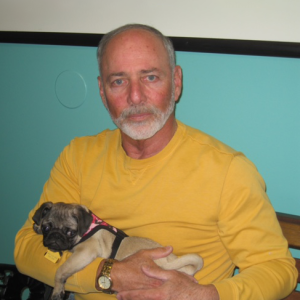An Important Refresher on Duty to Warn & Confidentially: A Two-Part Series
This is the first of a two-part article on the “What is the Duty to Warn, and does it apply to you?” In Part 1, Ethics instructor Saul Singer, LMFT, LCADC will address the background and history, why now, and the ethical and statutory requirements for reporting “threats of serious bodily harm or death in Nevada.” In Part 2, Confidentiality instructor Mark Disselkeon, MSW, LCSW, LADC will address HIPAA, 42CFR Part 2, and the nuances of when to report and how to report
Table of Contents
Part 1: What is the Duty to Warn, and does it apply to you?
By: Saul Singer, LMFT, LCADC
Almost 20 years of teaching ETHICS for continuing education has helped me to keep a pulse on clinical practices in Nevada. It has come to my attention that there is some confusion about the moral, ethical, and legal responsibilities of mental health providers and Alcohol and Drug Counselors to report threats of serious harm or death against persons made by their clients. Federal and state laws, licensing regulations, and ethics for the helping professions mandate and regulate standards for confidentiality and privacy, including provisions for exceptions that allow for or even require disclosure. Understanding the history that led to those exceptions can be helpful in clarifying our obligations to report and warn. One of the historical references is a 1969 tragedy commonly referred to as “Tarasoff.”
Tatiana Tarasoff and Prosenjit Poddar were students at UC Berkeley and had previously been dating. Poddar was diagnosed with a “Paranoid Schizophrenic Reaction” and told his Psychologist, Dr. Lawrence Moore, that he was thinking about how he would kill Tasasoff. Moore reported the threat to his supervisor and police were called. Poddar was detained for only a short period of time and released after an evaluation by two psychiatrists. Dr. Moore was directed not to continue sessions with Poddar.
Tarasoff and her parents were never notified of Poddar’s disclosure. Two months later, Poddar killed Tarasoff. The family sued UC Berkeley and Dr. Moore, citing failure to detain, failure to warn victim and family of danger, breach of duty to warn patient and public, and abandonment of patient. Tarasoff’s family won the lawsuit. The court found, “When a therapist determines, or pursuant to the standards of his profession should determine, that his patient presents a serious danger of violence to another, he incurs an obligation to use reasonable care to protect the intended victim against such danger.” (Tarasoff, 1976, p. 340). The standard for “duty to warn” became the timely notification to law enforcement and the intended victim when a threat of serious bodily harm or death occurred.
Clinicians with whom I have spoken, who are skeptical about a duty to warn, have offered the idea that Tarasoff is only California case law and so they do not have a duty to warn in Nevada. They miss the point. True, Tarasoff was a California case, but as will be discussed and cited in this article, its principles are reflected in statutory and ethical provisions that allow for exceptions to confidentiality and provisions for disclosure under specific circumstances. Those exceptions and provisions potentially could protect targeted persons from harm and shield clinicians from horrific moral, ethical, and legal consequences, whereas not reporting could lead to unfortunate outcomes for both innocents and clinicians.
Can you imagine listening to your client threaten to kill an innocent and believing that you cannot act on it, you do nothing? Your client murders their intended victim, and they are arrested for murder. The investigation leads to disclosure that you were the alleged killer’s therapist. Then you find out that you did have a legal and ethical obligation to act on the threat and a duty to protect the potential victim. A person is dead. You must feel awful. You lose your clinical license. Perhaps the district attorney will find grounds to charge you, alleging that you have complicity in the murder for not reporting the threat. Regardless, you have civil liability to a lawsuit. The victim’s spouse and children sue you for millions.
Cited below are the Nevada Revised Statutes, Nevada Administrative Codes, and Ethics for alcohol and drug treatment counselors and each of behavioral health professions that consent to or mandate the release of information when threats of serious harm or death are made by a client. In Part 2 of this article, Mark will explain HIPAA and 42CFR, Part 2, and how exceptions to confidentiality and “work arounds” in Federal Law open the door for disclosure in certain instances to report a crime or a threat against a person.
NRS 629.550 Duty to place patient who communicates certain threats on mental health crisis hold or petition court to order such hold or to make reasonable effort to timely communicate threats to certain persons; civil or criminal liability or disciplinary action.
1. If a patient communicates to a mental health professional an explicit threat of imminent serious physical harm or death to a clearly identified or identifiable person and, in the judgment of the mental health professional, the patient has the intent and ability to carry out the threat, the mental health professional shall place the patient on a mental health crisis hold pursuant to NRS 433A.160, petition for a court to order the placement of the patient on a mental health crisis hold pursuant to NRS 433A.155 or make a reasonable effort to communicate the threat in a timely manner to:
a. The person who is the subject of the threat;
b. The law enforcement agency with the closest physical location to the residence of the person; and
c. If the person is a minor, the parent or guardian of the person.
2. A mental health professional shall be deemed to have made a reasonable effort to communicate a threat pursuant to subsection 1 if:
a. The mental health professional actually communicates the threat in a timely manner; or
b. The mental health professional makes a good faith attempt to communicate the threat in a timely manner and the failure to actually communicate the threat in a timely manner does not result from the negligence or recklessness of the mental health professional
3. A mental health professional who exercises reasonable care in determining that he or she:
a. Has a duty to take an action described in subsection 1 is not subject to civil or criminal liability or disciplinary action by a professional licensing board for disclosing confidential or privileged information.
b. Does not have a duty to take an action described in subsection 1 is not subject to civil or criminal liability or disciplinary action by a professional licensing board for any damages caused by the actions of a patient.
4. The provisions of this section do not:
a. Limit or affect the duty of the mental health professional to report child abuse or neglect pursuant to NRS 432B.220 or the commercial sexual exploitation of a child pursuant to NRS 432C.110; or
b. Modify any duty of a mental health professional to take precautions to prevent harm by a patient:
1. Who is in the custody of a hospital or other facility where the mental health professional is employed; or
2. Who is being discharged from such a facility.
5. As used in this section, “mental health professional” includes:
a. A physician or psychiatrist licensed to practice medicine in this State pursuant to chapter 630 or 633 of NRS;
b. A psychologist who is licensed to practice psychology pursuant to chapter 641 of NRS or authorized to practice psychology in this State pursuant to the Psychology Interjurisdictional Compact enacted in NRS 641.227;
c. A social worker who:
1. Holds a master’s degree in social work;
2. Is licensed as a clinical social worker pursuant to chapter 641B of NRS; and
3. Is employed by the Division of Public and Behavioral Health of the Department of Health and Human Services;
d. A registered nurse who:
1. Is licensed to practice professional nursing pursuant to chapter 632 of NRS; and
2 Holds a master’s degree in psychiatric nursing or a related field;
e. A marriage and family therapist licensed pursuant to chapter 641A of NRS;
f. A clinical professional counselor licensed pursuant to chapter 641A of NRS; and
g. A person who is working in this State within the scope of his or her employment by the Federal Government, including, without limitation, employment with the Department of Veterans Affairs, the military or the Indian Health Service, and is:
1. Licensed or certified as a physician, psychologist, marriage and family therapist, clinical professional counselor, alcohol and drug counselor or clinical alcohol and drug counselor in another state;
2. Licensed as a social worker in another state and holds a master’s degree in social work; or
3. Licensed to practice professional nursing in another state and holds a master’s degree in psychiatric nursing or a related field.
(Added to NRS by 2015, 1551, 1817; A 2017, 911; 2019, 1937; 2021, 3113)
Nevada Administrative Code for Licensed Alcohol and Drug Counselors includes:
NAC 641C.425 Confidentiality of information. (NRS 641C.200)
1. A licensed or certified alcohol and drug abuse counselor, a licensed clinical alcohol and drug abuse counselor, a certified alcohol and drug abuse counselor intern or a certified clinical alcohol and drug abuse counselor intern shall maintain the confidentiality of information subject to the standards of confidentiality set forth in the provisions of the Health Insurance Portability and Accountability Act of 1996, Public Law 104-191, as amended, 42 C.F.R. Part 2 and 45 C.F.R. Parts 160 and 164.
4. A licensed or certified alcohol and drug abuse counselor, a licensed clinical alcohol and drug abuse counselor, a certified alcohol and drug abuse counselor intern or a certified clinical alcohol and drug abuse counselor intern shall maintain the confidentiality of information subject to the standards of confidentiality set forth in the provisions of the Health Insurance Portability and Accountability Act of 1996, Public Law 104-191, as amended, 42 C.F.R. Part 2 and 45 C.F.R. Parts 160 and 164.
5. Except as otherwise provided by state or federal law, a counselor or certified intern shall not communicate any information contained in the confidential record of a client with any other person without the consent of the client. Except as otherwise prohibited by federal law, if a counselor or certified intern determines, based on the information contained in the confidential file of a client, that a clear and immediate danger to a person or to society exists, the counselor or certified intern may release that information only to members of the family of the client, other professional workers or public authorities.
NASW, NAADAC, APA, ACA, AAMFT and NCC ethics allow for exceptions to confidentiality when reporting a threat of serious bodily harm or death.
 NASW:
NASW:
1.07 Privacy and Confidentiality
(c) Social workers should protect the confidentiality of all information obtained in the course of professional service, except for compelling professional reasons. The general expectation that social workers will keep information confidential does not apply when disclosure is necessary to prevent serious, foreseeable, and imminent harm to a client or others. In all instances, social workers should disclose the least amount of confidential information necessary to achieve the desired purpose; only information that is directly relevant to the purpose for which the disclosure is made should be revealed.
 NAADAC:
NAADAC:
NAADAC Principle II: Confidentiality and Privileged Information
II-7 Limits to Confidentiality
Addiction professionals, during informed consent, shall disclose the legal and ethical limits of confidentiality and shall disclose the legal exceptions to confidentiality. Confidentiality and limitations to confidentiality shall be reviewed as needed during the counseling relationship. Providers shall review with each client all circumstances where confidential information may be requested, and where disclosure of confidential information may be legally required.
II-8
Addiction professionals shall only reveal client identity or confidential information without client consent when a client presents a clear and imminent danger to themselves or to another person, and only to emergency personnel who are directly involved in reducing the danger or threat. Counselors shall obtain supervision or consultation when unsure about the validity of an exception, and shall document the recommendations.
NAADAC Principle III: Professional Responsibilities
III-1 Responsibility
Addiction professionals shall abide by the NAADAC Code of Ethics. Addiction professionals shall read, understand and follow the NAADAC Code of Ethics and shall adhere to applicable Federal and state laws and regulations.
 APA:
APA:
Know Your Relevant State Law
One of the most important steps a psychologist can take concerning his or her duty to protect is to find out what relevant state law exists. This encompasses case law (decisions made by courts), statutory law and perhaps common law. Many states have enacted duty to protect statutes.
Be Aware of Steps You Need to Take
In addition to knowing when the duty to protect is triggered, you should know what the statute requires as necessary steps to take. These vary from reporting to the police and/or the intended victim to taking additional steps to prevent the violence, such as hospitalizing the client.
 ACA:
ACA:
B.1.c. Respect for Confidentiality
Counselors protect the confidential information of prospective and current clients. Counselors disclose information only with appropriate consent or with sound legal or ethical justification.
B.1.d. Explanation of Limitations
At initiation and throughout the counseling process, counselors inform clients of the limitations of confidentiality and seek to identify situations in which confidentiality must be breached.
B.2. Exceptions
B.2.a. Serious and Foreseeable Harm and Legal Requirements The general requirement that counselors keep information confidential does not apply when disclosure is required to protect clients or identified others from serious and foreseeable harm or when legal requirements demand that confidential information must be revealed. Counselors consult with other professionals when in doubt as to the validity of an exception.
 AAMFT:
AAMFT:
STANDARD II: Confidentiality
2.1 Disclosing Limits of Confidentiality
Marriage and family therapists disclose to clients and other interested parties at the outset of services the nature of confidentiality and possible limitations of the clients’ right to confidentiality. Therapists review with clients the circumstances where confidential information may be requested and where disclosure of confidential information may be legally required. Circumstances may necessitate repeated disclosures.
2.2 Written Authorization to Release Client Information
Marriage and family therapists do not disclose client confidences except by written authorization or waiver, or where mandated or permitted by law. Verbal authorization will not be sufficient except in emergency situations, unless prohibited by law. When providing couple, family or group treatment, the therapist does not disclose information outside the treatment context without a written authorization from each individual competent to execute a waiver. In the context of couple, family or group treatment, the therapist may not reveal any individual’s confidences to others in the client unit without the prior written permission of that individual.
3.2 Knowledge of Regulatory Standards
Marriage and family therapists pursue appropriate consultation and training to ensure adequate knowledge of and adherence to applicable laws, ethics, and professional standards.
7.4 Informed Consent
Marriage and family therapists provide written notice and make reasonable efforts to obtain written consents of persons who are the subject(s) of evaluations and inform clients about the evaluation process, use of information and recommendations, financial arrangements, and the role of the therapist within the legal system.
7.5 Avoiding Conflicts
Clear distinctions are made between therapy and evaluations. Marriage and family therapists avoid conflict in roles in legal proceedings wherever possible and disclose potential conflicts. As therapy begins, marriage and family therapists clarify roles and the extent of confidentiality when legal systems are involved.
 NCC:
NCC:
LPC Ethics
Directives
NCCs, recognizing the potential for harm, shall not share information that is obtained through the counseling process without specific written consent by the client or legal guardian except to prevent clear, imminent danger to the client or others or when required to do so by a court order.
Conclusion:
Nevada therapists and counselors have a duty to report threats of serious harm or death made by a client against an individual. Professional ethics, regulations, and the Nevada Revised Statutes contain provisions that allow for or mandate exceptions to confidentiality when allowed by Federal Law.
Bottom Line: The gold standard for reporting a threat of serious harm or death is notifying both law enforcement and the intended victim.
Part 2: Understanding Duty to Warn and Federal and State Confidentiality Regulations
Mark Disselkoen, MSSW, LCSW, LCADC
There are several laws related to Duty to Warn and confidentiality that impact the state of Nevada. The bottom line is, if you are credentialed to provide counseling in Nevada, you have a duty to warn when a person makes a credible threat toward another person. Federal privacy laws establish limitations related to what information can be communicated, and how that information can be communicated in a Duty to Warn situation.
Confidentiality of Substance Use Disorder Patient Records 42 C.F.R. Part 2 (Part 2) has limitations to reporting when a threat is made. This law applies to providers who meet the definition as a Part 2 program. In general, there is a two-part definition that must be met, (1) Part 2 is limited to a program that “holds itself out as providing, and provides, alcohol, or substance use diagnosis, treatment, referral or treatment or prevention,” and (2) the provider receives federal assistance such as non-profit status or receiving funding from the Federal Government for treatment and prevention services (Seitz et al.2022, chapter 1). This, for example, includes block grant funding and Medicaid reimbursement. It is noted that if a provider is doing only mental health services and doesn’t meet the two-part definition of a Part 2 program, Part 2 would not apply. In most cases, HIPAA (45 CFR Parts 160, 162 and 164)), would apply to both mental health and substance use treatment providers if electronic transmissions related to billing is taking place (Seitz et al.2022, chapter 1). HIPAA has limitations to what information is reported when a threat is made as well, but the focus on this article is on Part 2 because it is more stringent than HIPAA and Nevada state law related to Duty to Warn. Part 2 Programs must ask, is the threat being made to a staff member of the Part 2 program? If yes, the Part 2 program may contact law enforcement and identify the client as receiving services at the program. Another question to ask is, has the threat been made against staff, client(s) or the public who are physically located on the premises of the Part 2 program? If yes, the Part 2 program may contact law enforcement as well (Seitz et al.2022, chapter 3).
Nevada state law requires that clinicians notify law enforcement when a threat has been made by a client. So, a question of many clinicians and providers who are covered entities under Part 2 is, what if a client makes a threat that does not fall within one of the two exceptions listed above? Legal Action Center (Seitz et al.2022, chapter 2) recommends making an anonymous call that cannot be traced back to the Part 2 or HIPAA program. The information cannot contain the status of the client receiving treatment or any Patient Identifying Information (PHI) other than the threat, name of client and their last known whereabouts.
This recommended approach allows the clinician and/or provider to meet Nevada state law, Federal Law as well as Judicial Case studies such as the Tarasoff’s California Supreme Court ruling related to duty to warn. Another excellent question that clinicians/providers ask are, what kinds of threats are reportable? As a part 2 program you would ask the question, is the crime extremely serious, i.e., directly threatens loss of life or serious bodily injury including homicide, rape, kidnapping, armed robbery, assault with a deadly weapon, and child abuse and neglect (Seitz et al.2022, appendix B). A yes answer in any of these cases would be reportable.
In the end, it is critical to put safety first and advocate for anyone being threatened, but it is critical to consult with other staff and stay within the parameters of the law to reduce risk of liability.
In complicated cases or when unsure, it is recommended that you seek legal counsel for the best course of action.
Saul Singer

Five decades working in Behavioral Health, Family Therapy, Couples’ Counseling, Addiction Counseling, Clinical Child Welfare, Corrections and Law Enforcement, Human Resources, Consulting, and Continuing Education. Experience included Private Practice; Community Treatment Programs; Clinical Supervision; College Instruction; Clinical Research Site Supervision for federally funded research of SFBT with low resource, high risk families in the Child Welfare and Juvenile Justice systems. Author of Brief Therapy for Clients with Challenging or Unique Issues: A Clinician’s Guide for Enhancing Outcomes, scheduled for publication by Routledge Publishing, 2023.
Mark Disselkoen

Mark Disselkoen, is Senior Project Manager at the Center for the Application of Substance Abuse Technologies (CASAT) at the University of Nevada, Reno since 2003. He is an LCSW and LCADC and has worked in the field of substance use and mental health treatment for over 30 years. He oversees the CCBHC project and certification and training/technical assistance contracts in Nevada and provides numerous trainings in the field of substance use and mental health treatment.
Reference:
Confidentiality and Communications: An Abridge and Updated Guide to 42 CFR Part 2 and HIPAA Fundamentals (Seitz, Marton, Friedman, Yeboah-Sampong, Khaikin, Wagner-Goldstein, Lopez, and Welby, 2020)
Blog Post Tags:
Related Blog Posts
Related Learning Labs
Related Resources
.
- Buscar Tratamiento de Calidad para Trastornos de uso de Sustancia (Finding Quality Treatment for Substance Use Disorders Spanish Version)
- Finding Quality Treatment for Substance Use Disorders
- Focus On Prevention: Strategies and Programs to Prevent Substance Use
- Monthly Variation in Substance Use Initiation Among Full-Time College Students
- The National Survey on Drug Use and Health (NSDUH) Report: Monthly Variation in Substance Use Initiation Among Adolescents








